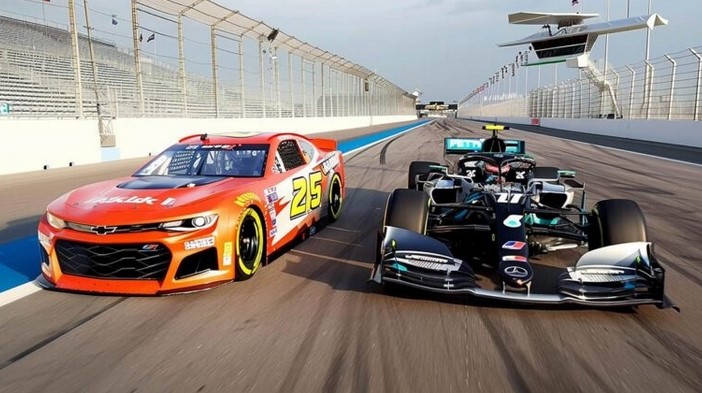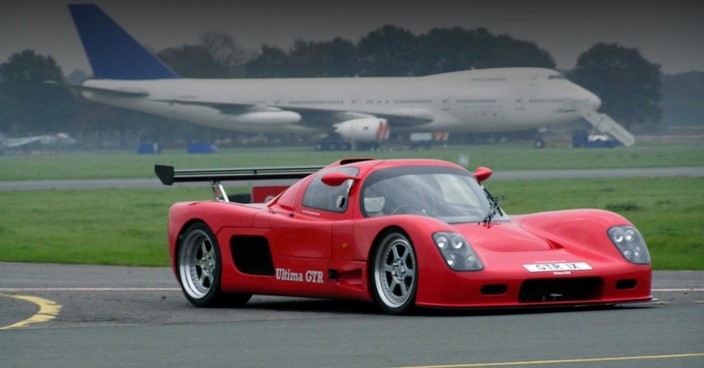
When it comes to motorsport, few events capture the global attention like Formula 1 (F1) and NASCAR. While both are elite racing series that showcase the speed, skill, and engineering of high-performance cars, Formula 1 vs NASCAR differences are significant in terms of their racing formats, car designs, and the experience they offer both drivers and fans. In this article, we will explore the key distinctions between these two prestigious racing events, from the cars and tracks to the rules and global appeal, to help you understand how they compare and contrast.
1. The Cars: Design, Speed, and Technology
One of the most striking Formula 1 vs NASCAR differences lies in the design and technology of the vehicles. While both types of cars are engineered for speed, they are fundamentally different in how they are built, perform, and handle on the track.
Formula 1 Cars: Cutting-Edge Engineering
Formula 1 cars are the epitome of cutting-edge technology and precision engineering. These cars are designed to be as light and aerodynamically efficient as possible, with advanced features such as:
- Hybrid Engines: Modern F1 cars are powered by hybrid engines, combining traditional internal combustion with electric power to enhance fuel efficiency and overall performance.
- Aerodynamics: The car’s aerodynamics are critical, with large rear wings and front diffusers designed to generate downforce and improve grip on the track. F1 teams invest millions in wind tunnel testing and simulations to ensure their cars achieve the highest possible performance.
- Carbon Fiber Construction: F1 cars are built primarily using carbon fiber, making them both incredibly strong and lightweight. This allows the cars to handle extreme cornering speeds while minimizing weight.
A Formula 1 car can reach speeds of over 230 mph (370 km/h) on straightaways, but its primary focus is on cornering speed, with the ability to maintain high speeds through sharp turns due to advanced tire and suspension technology.
NASCAR Cars: Power and Durability
On the other hand, NASCAR cars are designed with a focus on durability and sustained high-speed performance on oval tracks. Unlike Formula 1 cars, NASCAR vehicles are built with stock car principles, based on mass-produced models with modifications for racing. Key features include:
- V8 Engines: NASCAR cars use powerful, naturally aspirated V8 engines that produce over 750 horsepower. These engines are built for endurance, capable of running for hundreds of laps without significant degradation in performance.
- Aerodynamic Simplicity: NASCAR cars are less focused on cutting-edge aerodynamics and more on straightforward stability and power. Their bodies are similar to the original manufacturer models (e.g., Chevrolet, Ford, Toyota), though heavily modified for racing purposes.
- Reinforced Construction: While still relatively lightweight, NASCAR cars are designed to endure the grueling conditions of oval racing and withstand crashes, often featuring reinforced frames and safety structures to protect drivers.
NASCAR cars top out at around 200 mph (320 km/h) but are optimized for high-speed oval racing, where maintaining constant speed and control is more critical than cornering ability.
2. The Tracks: Oval vs. Road Racing
Another critical difference between Formula 1 and NASCAR is the types of tracks they race on. These variations dramatically affect the driving styles and strategies used by the drivers.
Formula 1 Tracks: A Global Circuit
Formula 1 races take place on a diverse range of tracks, including street circuits, permanent racing circuits, and closed public roads. These tracks are often located in major cities or scenic areas around the world, offering a blend of technical challenges for drivers. Key characteristics include:
- Road Courses: F1 races primarily feature road courses, which include a series of left and right turns, straights, and elevation changes. This requires exceptional car handling, braking, and acceleration skills.
- Global Reach: The Formula 1 calendar spans multiple continents, with races held in Europe, Asia, the Middle East, North America, and Australia. Each race has its own unique challenges based on the track layout, weather conditions, and geographical features.
The tracks range in difficulty from tight and twisty city circuits like the Monaco Grand Prix to high-speed tracks like Silverstone. The diversity of tracks demands a high level of adaptability from the drivers.
NASCAR Tracks: Oval Racing Focus
NASCAR, on the other hand, is predominantly associated with oval tracks, though some events feature road courses as well. The oval tracks in NASCAR can vary in size, with short tracks, intermediate tracks, and superspeedways. Notable characteristics of NASCAR tracks include:
- Oval Tracks: Most NASCAR races take place on oval tracks, where drivers continuously make left turns, often at high speeds. The racing style is more about maintaining consistent speeds, tire management, and navigating high-speed pack racing.
- Superspeedways and Short Tracks: Some of NASCAR’s most famous events take place at superspeedways like Daytona and Talladega, where speeds can exceed 200 mph. These tracks are long, fast, and often result in dramatic drafting strategies and pack racing. Short tracks, like Bristol Motor Speedway, create more intense, close-quarters racing with frequent collisions and tight turns.
NASCAR races tend to have longer durations than F1 races, with races often lasting several hours, due to the nature of oval racing and the need for pit stops and strategy adjustments.
3. The Strategy: Pit Stops, Teamwork, and Race Length
While both Formula 1 and NASCAR require strategic planning and precision, their approach to race strategy is quite different.
Formula 1 Strategy: Precision and Split-Second Decisions
In Formula 1, the strategy revolves heavily around tire management, fuel efficiency, and pit stops. Teams must decide on the optimal tire compound (soft, medium, or hard) and pit strategy to balance speed and durability throughout the race. Here’s a look at the strategic elements of F1:
- Pit Stops: F1 races feature incredibly fast pit stops, often under 3 seconds. Tire changes and minor repairs are done quickly to maximize a car’s performance on the track.
- Race Length: F1 races are typically shorter, lasting around 1.5 to 2 hours, but can be influenced by weather conditions, such as rain delays. A single mistake or poor tire choice can drastically affect the outcome of a race.
The team’s ability to react quickly to changing conditions, adjust race strategies, and communicate with the driver in real time plays a significant role in the overall success.
NASCAR Strategy: Endurance and Tactical Positioning
In NASCAR, race strategy is more focused on endurance and the ability to manage long stretches of racing at high speeds. Drivers often work with teammates to employ drafting techniques—using the slipstream of another car to reduce drag and increase speed. Key strategic elements include:
- Pit Stops: While NASCAR pit stops are longer than those in F1, the strategy is still crucial, as teams must plan for tire changes, fuel top-ups, and adjustments to the car’s setup based on track conditions.
- Race Length: NASCAR races can last anywhere from 3 to 6 hours, with some races like the Daytona 500 lasting even longer. Endurance, consistency, and managing tire wear over the course of the race are key factors.
Pit crew timing, drafting, and race positioning are all part of a NASCAR driver’s arsenal, making teamwork and communication crucial for success.
When examining the Formula 1 vs NASCAR differences, it’s clear that each series has its own unique appeal and challenges. Formula 1 offers a highly technical and fast-paced environment with cutting-edge engineering, diverse track types, and global competition. NASCAR, on the other hand, emphasizes endurance, teamwork, and the art of racing on oval tracks at high speeds. While both are thrilling to watch and require immense skill and precision, the differences in car design, track types, and race strategies set these two racing series apart.
Whether you prefer the high-tech world of Formula 1 or the endurance-driven excitement of NASCAR, both have carved out their own place in the hearts of motorsport fans worldwide. Ultimately, understanding the Formula 1 vs NASCAR differences will help you appreciate the distinct characteristics that make each series unique and captivating in its own right.
